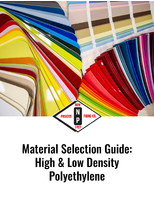Application of High Precision Thickness Tester in Packaging Material - Labthink i-THICKNESS 4100 Thickness Tester
Abstract
This article is to introduce the application of mechanical thickness tester in the thickness measurement of packaging material.
Keyword: Mechanical thickness tester, non-contact method, pressure, presser foot, parallelism
1. Types of Packaging Materials
At present, there are various types of package materials on the market such as metal, non-metal, glossy, matt, single layer, complex and co-extrusion packaging materials. For some expensive materials such as aluminum foil and EVOH, how to control the thickness of the material is the key to saving production cost. Over-thickness will not only cause the waste of material but also influence the production efficiency. Obviously, thickness of the material is controlled and can only be measured by thickness tester.
2. Mechanical Thickness Tester
Classified by testing principle, the commonly used thickness testes include laser thickness tester, capacitive thickness tester, eddy current thickness tester, mechanical thickness tester and etc. Non-contact method thickness tester is selective in test specimen. For example, the test precision of laser type is very high in specific fields, but the glossiness and transparency of test specimens would influence the test results greatly. There are greater test errors of metal and nonmetal materials tested by the capacitive or eddy current type testers. To be concluded, each non-contact method thickness tester could be used in specific fields. But users can not afford to purchase many kinds of thickness testers for specimens of different materials. Mechanical thickness tester is a contact type instrument with high precision sensor. Thickness test is only related to the minor displacement so it is not selective to the test specimen. The test precision of mechanical thickness tester mainly depends on the precision of the displacement sensor. Ambient temperature and wind velocity will influence the test precision of sensor, so the instrument must be used within laboratory.
i-THICKNESS 4100 is a mechanical thickness tester developed by Labthink with a testing resolution up to 0.1μm. Â
1. Types of Packaging Materials
At present, there are various types of package materials on the market such as metal, non-metal, glossy, matt, single layer, complex and co-extrusion packaging materials. For some expensive materials such as aluminum foil and EVOH, how to control the thickness of the material is the key to saving production cost. Over-thickness will not only cause the waste of material but also influence the production efficiency. Obviously, thickness of the material is controlled and can only be measured by thickness tester.
2. Mechanical Thickness Tester
Classified by testing principle, the commonly used thickness testes include laser thickness tester, capacitive thickness tester, eddy current thickness tester, mechanical thickness tester and etc. Non-contact method thickness tester is selective in test specimen. For example, the test precision of laser type is very high in specific fields, but the glossiness and transparency of test specimens would influence the test results greatly. There are greater test errors of metal and nonmetal materials tested by the capacitive or eddy current type testers. To be concluded, each non-contact method thickness tester could be used in specific fields. But users can not afford to purchase many kinds of thickness testers for specimens of different materials. Mechanical thickness tester is a contact type instrument with high precision sensor. Thickness test is only related to the minor displacement so it is not selective to the test specimen. The test precision of mechanical thickness tester mainly depends on the precision of the displacement sensor. Ambient temperature and wind velocity will influence the test precision of sensor, so the instrument must be used within laboratory.
i-THICKNESS 4100 is a mechanical thickness tester developed by Labthink with a testing resolution up to 0.1μm. Â
Fig.1. Labthink i-THICKNESS 4100
3. Design difficulties of mechanical thickness tester and the solutions
By studying the standards, it could be seen that there are mainly two difficulties in the design of mechanical thickness tester. One is how to control the pressure of presser foot and the other one is how to reach a higher parallelism between the surface of presser foot and the surface of anvil.
3.1 Pressure Control of Presser Foot
Flexible packaging material would become deformed by compression. Therefore, the test should strictly conform to the requirements for contact area and pressure specified in standards. Different standards have different requirements for contact area and pressure. For example, for thickness measurement of paper, the pressure specified in ASTM D 645 is 50kPa whereas it in ISO 534 is 100kPa. During the comparison of testing results, attention should be paid to the test standard and test conditions.
The same specimen tested by mechanical thickness testers with the same testing principle may produce different test results. The main reason for this is the pressure applied on the specimen during test is different. All the testing instruments are developed based on relative standards. For some simple thickness testers, e.g. spiral micrometer, the pressure applied on the specimen is difficult to quantify and the pressure applied on film and paper are same, which does not conform to the relative standards. Thus the test conditions have to be taken into consideration in comparison of test data.
3.2 Parallelism for presser foot and anvil
There are two basic requirements for presser foot and anvil. The surface of the presser foot should be parallel to that of the anvil and the motional direction of presser foot should be perpendicular to the surface of anvil. It is described in standard ASTM D 645 in the following way:” The surface of the presser foot shall be parallel to the surface of the anvil to within 0.001mm. The presser foot movement shall be on an axis that is perpendicular to the anvil surface.” Actually, to ensure that the presser foot moves perpendicularly to the anvil surface is also to make the two surfaces parallel with each other so that test precision could be guaranteed.
The commonly used presser feet in film thickness measurement are plane presser foot and sphere presser foot. The former one could apply pressure evenly on test area of specimen while the latter one could easily realize the parallelism of measuring point and anvil surface. However, test area and pressure cannot be quantified and controlled with sphere presser foot. Most of the mechanical thickness testers adopt plane presser foot to make the test data more representative.
The parallelism of presser foot and anvil surface is achieved by system calibration in Labthink i-THICKNESS 4100 Thickness Tester. The users do not have to adjust the parallelism once the calibration is completed. Additionally there should be free of any contaminant between presser foot and anvil surface. Do not touch the presser foot. Disassembly without authorization is strictly prohibited, otherwise the accuracy of the instrument could not be guaranteed.Â
4. Conclusion
Owing to the compressibility of the structure of the flexible package, mechanical thickness tester has found a wider application than the non-contact method thickness testers. As the thickness of the same material measured varies under different pressure, the thickness measurement of flexible packaging material should be performed according to specified standards.
Detailed information,pls contact Emilywu via sales@labthinkinternational.com or visit our website: www.labthinkinternational.com/ .




